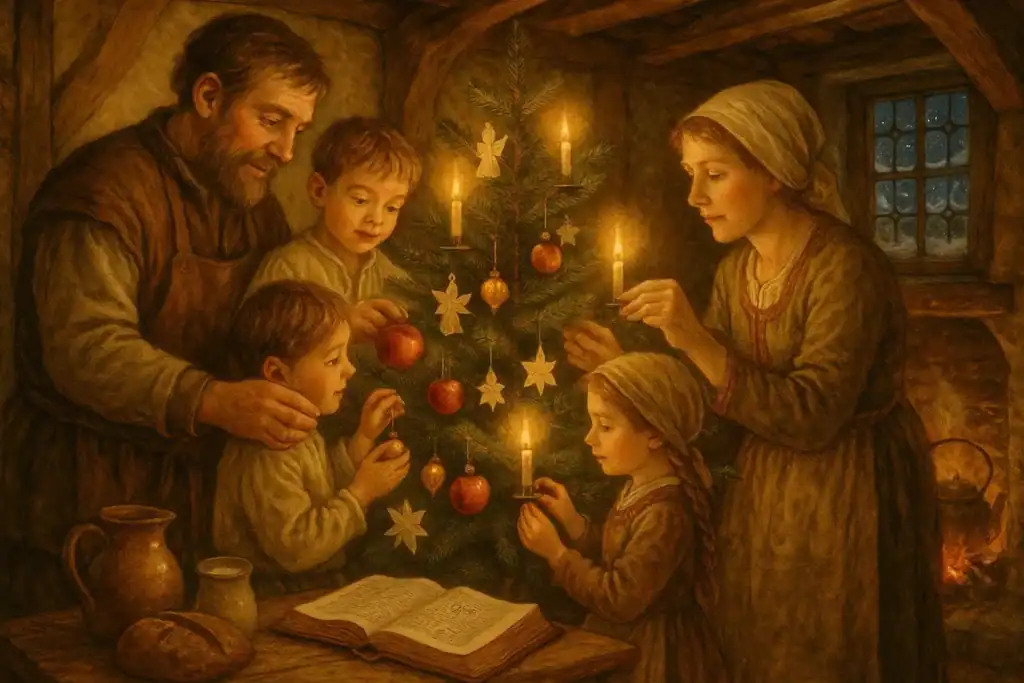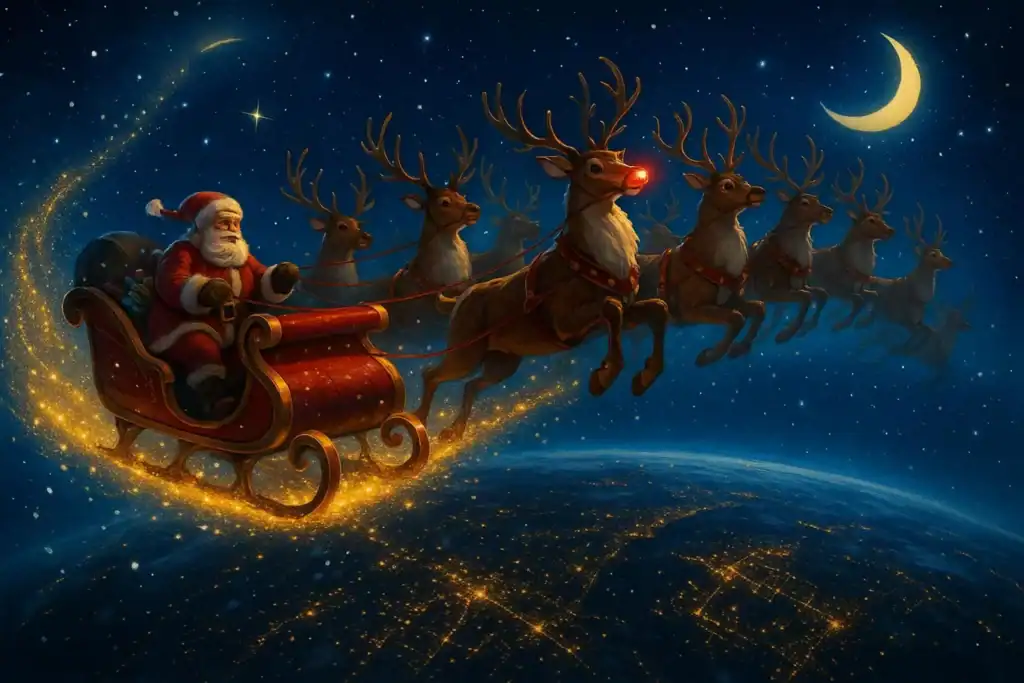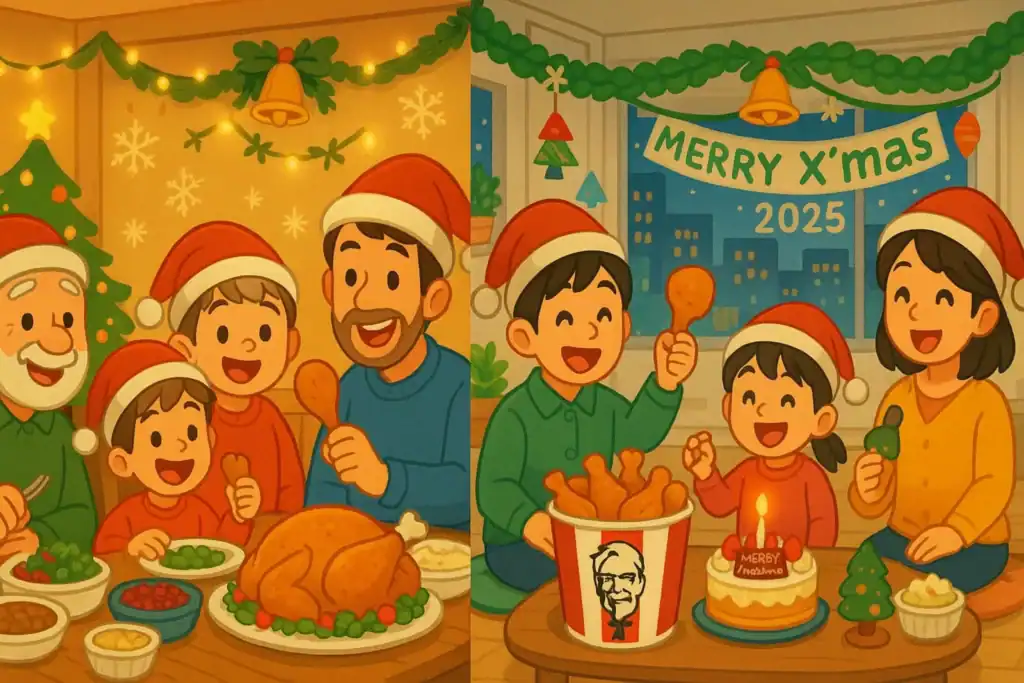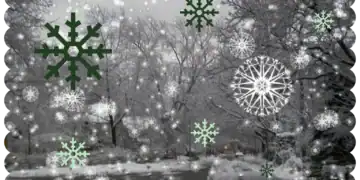Christmas is a special time of year filled with twinkling lights, festive songs, and the joy of giving and receiving. But beyond the glitter and gifts, have you ever wondered about the interesting stories and funny beginnings behind our favorite holiday traditions? This article is packed with fun facts about Christmas, perfect for curious kids (and grown-ups too!) who want to learn more about this cheerful season.
What Makes Christmas Special for Kids?
For children, Christmas is often a colorful mix of excitement and wonder. It’s a time when ordinary homes turn into festive spaces, decorated with sparkling ornaments and the smell of pine. The air feels busy with joy, from Advent calendar countdowns to quiet whispers about Santa’s visit. It’s a season that inspires imagination, encourages kindness, and creates lasting memories with family and friends.
What Are the Most Loved Christmas Traditions for Children?
Kids around the world enjoy many Christmas traditions that center on family, magic, and gifts. Favorites include decorating the Christmas tree, hanging stockings by the fireplace, and leaving out milk and cookies for Santa. Other popular activities are singing carols, watching festive movies, and opening Advent calendar doors each day. These simple, shared rituals help kids feel part of something special and add to the magic of the holiday.
Fascinating Christmas Fun Facts for Kids
Where Did the Tradition of Christmas Trees Begin?
The custom of bringing evergreen trees indoors and decorating them goes back centuries. Christmas trees became very popular in Victorian Britain thanks to Queen Victoria and Prince Albert, but the idea is older. Many believe it started in 16th-century Germany, where people decorated fir trees with fruits, nuts, sweets, paper shapes, and candles. Even earlier, ancient Romans and Egyptians used evergreen plants and garlands to show the idea of everlasting life. Today, every U.S. state, including Hawaii and Alaska, grows Christmas trees. A Christmas tree usually takes 6-8 years to grow, and sometimes as long as 15 years.

Here’s a fun fact: the first artificial Christmas tree wasn’t plastic. Early artificial trees in Germany in the early 1600s were made from goose feathers dyed green. Later, in 1930, the Addis Brush Company in the U.S. made artificial trees from brush bristles using the same machines that made toilet brushes. These trees were less likely to catch fire and could hold heavier ornaments-great news when candles were common.
Why Do We Hang Stockings and Who Started the Custom?
The sweet tradition of hanging stockings by the fireplace comes from a Dutch legend. The story tells of Saint Nicholas, a kind Christian bishop from the 4th century, who wanted to help a poor man with three daughters but no money for dowries. St. Nicholas secretly dropped a bag of gold down their chimney. The coins fell into the daughters’ stockings, which were hanging by the fireplace to dry. This surprise gift allowed the daughters to marry, and the stocking tradition was born. In some places, like Germany, gifts are placed in boots on December 6th to celebrate Saint Nicholas Day.
What Are the Origins of Santa Claus and His Many Names?
Santa Claus, the cheerful gift-giver we know today, comes from a mix of history, legend, and even marketing. He is based on Saint Nicholas of Myra, a Greek Christian bishop who lived in what is now Turkey from 270-343 AD. St. Nicholas was famous for kindness and secret gifts, especially for children. His Dutch name, “Sinterklaas,” eventually became “Santa Claus” in English.
People around the world call Santa by different names. Here are a few:
| Country | Name |
|---|---|
| United Kingdom | Father Christmas |
| France | Père Noël / Papa Noël |
| Germany | Weihnachtsmann (“Christmas Man”) |
| Poland | Święty Mikołaj (Saint Nicholas) |
These names show the rich mix of Christmas customs worldwide, all pointing to the same generous spirit.
How Fast Does Santa Travel on Christmas Eve?
This is hard to imagine! If Santa delivers presents to all the children on his “nice list” in one night, he must be very fast. There are about 2.5 billion children in the world. With an average of 2.5 children per household, Santa would visit around 842 million homes. Thanks to time zones, he gets about 31 hours to make his trip. Mathematicians estimate Santa’s sleigh would need to move at around 1,800 miles per second, or about 2.3 million miles per hour. That’s faster than the speed of light, so it’s good he has magical reindeer to help!

How Many Reindeer Pull Santa’s Sleigh?
Most people say Santa has nine reindeer, but at first there were only eight. They appeared in Clement Moore’s 1823 poem “A Visit from Saint Nicholas” (“’Twas the Night Before Christmas”). Their names were:
- Dasher
- Dancer
- Prancer
- Vixen
- Comet
- Cupid
- Dunder
- Blixem
“Dunder” and “Blixem” come from German words for “thunder” and “lightning,” later changed to “Donner” and “Blitzen.”
Here’s another fun fact: male reindeer shed their antlers in winter. That means the reindeer pulling Santa’s sleigh are likely female or castrated, since females keep their antlers through winter. Santa’s team may be led by strong, antlered ladies!
Was Rudolph the Red-Nosed Reindeer Always Part of the Team?
Rudolph was not part of the original team. He was created in 1939 by Robert L. May, a copywriter for the Montgomery Ward department store, to help sell Christmas coloring books. That year, the store gave away 2.4 million copies of the Rudolph book.
At first, Rudolph didn’t even have a red nose. A red nose was sometimes linked with heavy drinking, so the store avoided it. The red nose later became Rudolph’s most famous feature. In 1949, Johnny Marks, May’s brother-in-law, turned the story into the song “Rudolph the Red-Nosed Reindeer,” recorded by Gene Autry, which made Rudolph a Christmas favorite.
Which Countries Have Their Own Unique Christmas Characters?
Santa is famous worldwide, but many places have their own special characters:
- Italy: La Befana is a kind witch who flies on a broom and brings toys on the eve of Epiphany (January 6).
- Iceland: Children leave shoes on windowsills for 13 playful “Yule Lads.” Good kids get sweets; naughty kids may get a rotten potato.
- Netherlands: Sinterklaas has a helper called Grumpus, who, by legend, threatens naughty kids.
These characters add fun and folklore to Christmas around the world.
What Surprising Foods Are Eaten at Christmas in Different Countries?
Holiday meals vary widely. In many Western countries, people enjoy roast turkey, mince pies, and Christmas pudding, traditions popular since Victorian times. In Japan, the traditional Christmas dinner is KFC. This started with a “Kentucky for Christmas” campaign in 1974 and has been a hit ever since, bringing in millions each year. So while you might be carving turkey, someone in Tokyo may be sharing a bucket of fried chicken.

Why Is ‘Jingle Bells’ Played at Christmas?
“Jingle Bells” is one of the best-known holiday songs, but it wasn’t written for Christmas. James Pierpont wrote it in 1850 (copyrighted as “One Horse Open Sleigh” in 1857) in Massachusetts for Thanksgiving. The lyrics don’t mention Christmas, Jesus, or Santa. It was likely written for a church Thanksgiving concert. Over time, it became a winter favorite and joined the Christmas season. It was also the first song sung in space by astronauts Tom Stafford and Wally Schirra on December 16, 1965.
When Did Christmas Cards Become Popular?
Sending Christmas cards took off in the Victorian era. The first mass-produced card was made in the U.K. in 1843. Sir Henry Cole, the first director of the Victoria and Albert Museum, wanted an easy way to send greetings. The cards showed a family celebrating and scenes of charity. The idea spread quickly, and by the late 1800s, people loved sending cards. Today, over 3 billion Christmas cards are sent in the U.S. each year.
Fun Facts About Christmas Traditions and Symbols
Why Are Christmas Trees Decorated With Tinsel and Lights?
A decorated Christmas tree shines for a reason. Tinsel was invented in Germany in 1610 and was originally made from real silver to reflect candlelight. Silver tarnishes, so people later used other metals and then plastics. Real silver tinsel isn’t common now, but you can still find sterling silver tinsel jewelry.
Before electric lights, people hung fruit, popcorn, and even candles on trees. In 1882, two years after Thomas Edison invented the light bulb, his assistant Edward Johnson hand-wired 80 red, white, and blue bulbs around his Christmas tree. That clever idea started the tradition of electric Christmas lights.
How Did the Christmas Star and Nativity Scene Become Symbols?
The Christmas star and the Nativity scene come from the Christian story of Jesus’ birth. Christians believe Jesus was born in a stable in Bethlehem. The Nativity scene, called “presepe” in Italy, shows Mary, Joseph, baby Jesus in a manger, shepherds, wise men, and animals. These scenes appear in churches, town squares, and homes. The custom of a straw-filled crib began in Italy and spread worldwide.
The star at the top of the tree often represents the Star of Bethlehem, which the Bible says guided the Three Wise Men to Jesus. It stands for hope and guidance and reminds people of the spiritual side of Christmas.
What Is the Story Behind Candy Canes?
Candy canes date to 1670 in Germany. A choirmaster at Cologne Cathedral wanted a way to keep children quiet during long services. He asked a candy maker for “sugar sticks” and had them bent into a “J” like a shepherd’s crook to remind kids of the shepherds who visited baby Jesus. The white color stood for purity, and later red stripes were added to represent the blood of Christ. A simple church treat became one of the most famous Christmas candies.
Santa Claus: Myths, Legends, and Facts Kids Love
Who Was the Real Saint Nicholas?
Behind Santa is a real person: Saint Nicholas of Myra. Born in the 3rd century in what is now Turkey, he became a Christian bishop known for kindness and generosity. He often gave secretly to people in need, especially children. One well-known story says he dropped bags of gold down a chimney to help three sisters with dowries. His good deeds made him a saint and the patron saint of children. His spirit of giving is at the heart of the Santa story.
How Did Santa Get His Red Suit?
Santa didn’t always wear red. For many years, artists drew him in green, purple, or blue, sometimes like the robes of Saint Nicholas. The bright red suit became standard in the 1930s, when Coca-Cola used Santa in winter ads. Artist Haddon Sundblom painted a warm, friendly Santa in red and white-the company’s colors. Those images were seen everywhere and fixed the red suit in people’s minds.
Does Santa Really Have a Favorite Cookie?
Leaving milk and cookies for Santa is a much-loved tradition, though his favorite cookie remains a mystery. Long ago, Norse children left hay and treats for Odin’s horse, Sleipnir. Later, Dutch children left food in their wooden shoes for St. Nicholas’ horse, and treats for St. Nicholas too. Today, many kids leave cookies and milk for Santa. He probably likes all kinds, but chocolate chip and gingerbread are always good choices.
What Is the NORAD Santa Tracker?
The NORAD Santa Tracker lets families follow Santa’s trip around the globe on Christmas Eve. It began in 1955 because of a misprinted phone number in a Sears ad. The number went to the Continental Air Defense Command (CONAD) Operations Center. Instead of turning callers away, Colonel Harry Shoup told his staff to give kids updates on Santa’s “flight.” When the North American Aerospace Defense Command (NORAD) formed in 1958, the tradition continued. Every Christmas Eve, NORAD tracks Santa in real time on noradsanta.org and through many media outlets, so everyone can follow the big man in red.
Christmas Around the World: Surprising Customs and Facts
What Are Some Unusual Ways Kids Celebrate Christmas Across the Globe?
Christmas is celebrated across the globe, but the customs can be very different. In Iceland, those 13 Yule Lads leave treats or potatoes in children’s shoes. In the Philippines, the season starts weeks or even months early, and homes glow with star-shaped lanterns called “paról,” which stand for the Star of Bethlehem. In Portugal, children put out their shoes for Baby Jesus and exchange gifts after Christmas Eve church services. These traditions show the wide variety of ways people celebrate.
How Do Traditions in Japan, Italy, and South Africa Stand Out?
Japan, Italy, and South Africa each have their own style. In Japan, Christmas is popular even though most people aren’t Christian, and KFC is the go-to meal because of a successful ad campaign. In Italy, the “presepe” Nativity scene is often more important than the tree. “Babbo Natale” (Father Christmas) brings gifts on Christmas Day, and many families also give presents on January 6, the Day of Epiphany, when La Befana arrives. In South Africa, Christmas happens in summer, so families often celebrate outdoors with “braais” (barbecues). Malls display festive decorations that may include African crafts and local designs. These examples show how traditions grow and fit local life and weather.
Which Countries Celebrate Christmas in Summer?
For people in the Southern Hemisphere, Christmas comes in the middle of summer. Australia, New Zealand, and South Africa celebrate on December 25 with warm weather and outdoor fun. In Australia, families enjoy picnics and sing carols at the beach, including famous spots like Bondi Beach. In South Africa, many gather for a family braai. Summer Christmases prove the holiday spirit shines in any season.
Who Is La Befana and What Is Her Role in Italian Christmas?
In Italy, children look forward to a visitor called La Befana. She is an old woman who flies on a broom, wears a black shawl, and leaves gifts. Her story is linked to the Epiphany on January 6. The Three Wise Men asked her for directions to baby Jesus. She was busy sweeping and didn’t go, but later regretted it and set out with gifts. Not finding him, she now flies on Epiphany Eve, bringing toys and sweets to good children and coal (or dark candy) to naughty ones, hoping to find the Christ child in every home. La Befana is a beloved part of Italian folklore.
Famous Christmas Records and Surprising Statistics
Which Christmas Song Sold the Most Copies Ever?
Bing Crosby’s “White Christmas,” written by Irving Berlin, is the best-selling physical single of all time, with more than 50 million copies sold worldwide. Its gentle tune and nostalgic lyrics keep it popular year after year. It also brings in large yearly royalties-about $426,400-though Slade’s “Merry Xmas Everybody” and Mariah Carey’s “All I Want for Christmas Is You” earn even more each year.
What Are Some World Records Set at Christmas?
- Most beard baubles: Joel Strasser set the record in 2022 with 710 Christmas baubles in his beard.
- Most expensive decorated Christmas tree: In 2010, the Emirates Palace in Abu Dhabi displayed a tree with 181 pieces of jewelry worth $11,026,900 (over $15.9 million in 2025 dollars).
- Largest online Secret Santa: In 2013, redditgifts.com hosted an exchange with 89,421 participants.
These records show how creative and enthusiastic people can be during the holidays.
How Big Was the Tallest Christmas Tree on Display?
Some Christmas trees are huge. The tallest living Christmas tree in America is a 161-foot tree at Idaho’s Coeur d’Alene Resort. It’s more than twice the height of the Rockefeller Center tree, with over 30,000 lights and a ten-foot star on top. London’s Trafalgar Square features a 20-meter (about 65-foot) tree gifted by Norway each year as thanks for help during World War II. In Portugal, the city of Agueda displays the “biggest Santa in the World,” a 21-meter (69-foot) tall Santa with 250,000 LED lights.
Top Questions Kids Ask About Christmas
Why Do People Give Presents at Christmas?
Gift-giving shows love and joy, and it has several roots. In the Christian story, the Three Wise Men brought gold, frankincense, and myrrh to baby Jesus. The legend of Saint Nicholas also tells of secret gifts to people in need. Over time, these examples grew into the custom of exchanging presents with family and friends to share happiness and make special memories.
How Old Is Santa Claus Supposed to Be?
Santa is a legendary figure linked to Saint Nicholas, who lived in the 3rd and 4th centuries. If we connect Santa to Saint Nicholas, he would be over 1,700 years old. In stories, Santa is often shown as ageless-a timeless symbol of generosity who stays young at heart thanks to the magic of the season and the belief of children.
Who Helps Santa in the North Pole?
Santa doesn’t do it all alone. He has helpers at his North Pole workshop:
- Elves who work all year making toys and getting everything ready. The exact number is secret-some say there are “at least 12” just in the Grotto’s HR department.
- Mrs. Claus, who likely helps with organizing, baking, and keeping things running smoothly.
- Nine trusty reindeer who pull the sleigh through the night sky.
Together, they make Christmas happen.
Try These Fun Christmas Facts With Your Family
Can You Find Out Which Fun Fact Surprises Your Friends Most?
Now that you know so many fun Christmas facts, share them with family and friends. Make a game of it at your next holiday get-together. Ask if they knew “Jingle Bells” was a Thanksgiving song, or that Santa didn’t always wear red. See who’s surprised that tinsel used to be made of real silver, or that a witch named La Befana brings gifts in Italy. You might learn new facts from them too. Sharing these tidbits is a great way to start conversations and add extra fun to the season-maybe you’ll even start a new family tradition of learning about the history and global variety of Christmas celebrations.









































